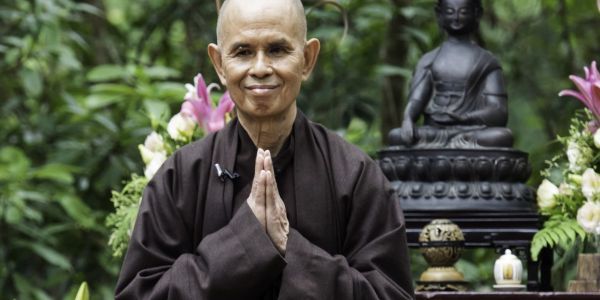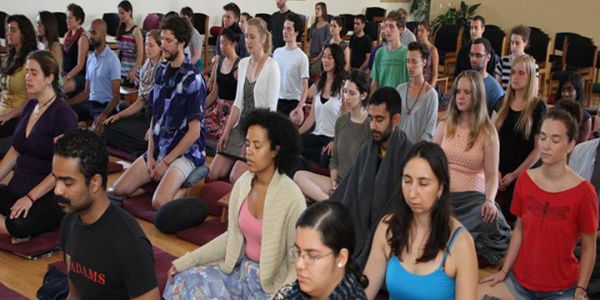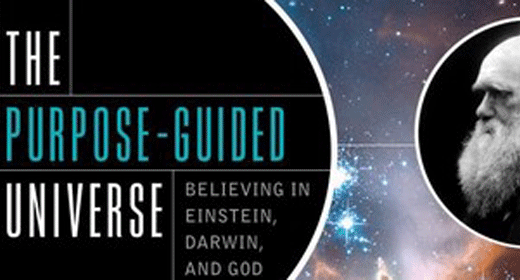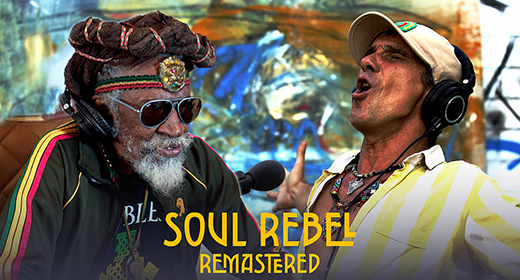by Joaquín: The history and origins of mindfulness…
Mindfulness is a practice involved in various religious and secular traditions, from Hinduism and Buddhism to yoga and, more recently, non-religious meditation. People have been practicing mindfulness for thousands of years, whether by itself or as part of a larger tradition. This article will cover some of the Eastern traditions which have embraced mindfulness, as well as how it has become popular in the West.
In general, it can be said that mindfulness was mostly popularized in the East by religious and spiritual institutions, while in the West its popularity can be traced to particular people and secular institutions. Of course, even the secular tradition of mindfulness in the West owes its roots to Eastern religion and even certain practitioners of Eastern religions. This is where any discussion of the history of mindfulness should begin.
Before we begin, a quick note – some commentators argue that the history of mindfulness should not be reduced to Buddhism and Hinduism, as mindfulness also has roots in Judaism, Christianity, and Islam (Trousselard et al., 2014). That said, most modern Western practitioners and teachers of mindfulness learned about mindfulness in the Buddhist and Hindu tradition, so this article will focus on mindfulness from a Buddhist and Hindu perspective. This should not be taken as a denial of mindfulness’s roots in the other religions, and interested readers are encouraged to seek out information about mindfulness as it pertains to these other religions. One possible starting point comes from Leisa Aitken, a clinical psychologist and practicing Christian, though this is just one of many options.

A Brief History of Hinduism
Hinduism is widely considered to be the oldest extant religion in the world, but it is hard to define its history. This is because it initially arose as a synthesis of many religious traditions around the historical region that now makes up India. In other words, Hinduism has no single founder and no concrete starting point. In fact, the religious tradition was not even called Hinduism or considered a singular entity until British writers started calling Vedic traditions “Hinduism” in the 1800s.
With all that said, the earliest traditions which have since been incorporated into Hinduism arose more than 4,000 years ago in the Indus Valley in what is now Pakistan. This is why Hinduism is considered the oldest religion in the world. This religious tradition continued to develop in Vedic writings 2,500-3,500 years ago. These writings included rituals and the worship of Gods common to modern-day Hinduism.

About 1,500-2,500 years ago, more texts were composed which are now involved in present-day Hinduism, including texts introducing the concepts of dharma and temple worship. While these religious traditions continued to develop, they were already pretty recognizable as Hinduism by this time. Hinduism experienced some competition in India a few hundred years ago with the rise of Islam, but 19th-century reformers revitalized Hinduism and helped tie it to the national identity of India. One of the reasons this was initially successful was because middle-class Indians started identifying with Hinduism around the mid 19th century (Hatcher, 2007). This connection was then solidified about a hundred years later with the Indian independence movement.
Mindfulness has been intertwined with Hinduism for millennia. From the Bhagavad Gita’s discussions of yoga to Vedic meditation, the history of Hinduism reads in part like a history of mindfulness. Of course, it is only a partial history, and another crucial player in the history of mindfulness is Buddhism. It should be noted, however, that even Buddhism itself owes a great debt to Hinduism.
A Short History of Buddhism
Compared to Hinduism, Buddhism’s history is much more well-defined. Buddhism was founded around 400-500 B.C.E. by Siddhartha Gautama, who was referred to as the Buddha from then on. Gautama is thought to have been born and raised around modern-day India and Nepal. Based on where and when Gautama was raised, it is safe to say that many Hinduist teachings informed his upbringing.
In fact, Buddhism and Hinduism share many commonalities. The most obvious is the one mentioned above, that they both arose in the same region. Beyond that, both Hinduism and Buddhism are greatly concerned with the concept of dharma, a concept that is very difficult to define or translate but includes a way of life that is in harmony with the natural order of the universe. Despite the shared presence of dharma in both of these philosophies/religions, Buddhism is definitively not a subsect of Hinduism because Buddhism does not concern itself with the sacred writings of the Veda (Hacker & Davis, Jr., 2006).

In general, Buddhism is a religion (though sometimes considered to be a not-necessarily-religious philosophy) that aims to show its followers the path to enlightenment. Since The Buddha’s lifetime, it has split into several different traditions, including Theravada Buddhism and Zen Buddhism. Today, Buddhism is probably most often thought of by non-practitioners in the terms of Tibetan Buddhism and the Dalai Lama, an individual who is thought to be an enlightened teacher of Tibetan Buddhism.
Mindfulness may be even more involved in Buddhism than it is in Hinduism, as mindfulness (Sati) is considered to be the first step towards enlightenment in Buddhism. In fact, some sources even consider the English word “mindfulness” to be a simple translation of the Buddhist concept of Sati. The fact that mindfulness is such a crucial aspect of Buddhism combined with the fact that many Western influences in mindfulness studied under Buddhist teachers (as we will explore later in this article) shows that Western mindfulness is largely indebted to Buddhism.
How Mindfulness Relates to Yoga
Yoga is related to Hinduism and Buddhism, two religious traditions which are both concerned with mindfulness. Yoga and mindfulness can also be directly related, as some yoga practices incorporate mindfulness. Some mindfulness meditation practices such as the body scan are very similar to yoga, as they both involve awareness of one’s body. There is a lot of overlap between mindfulness and yoga, both historically and presently.
Some yoga practices can even just be considered mindfulness practices, and vice-versa. One study examined this idea by measuring mindfulness in people who practice yoga (Gaiswinkler & Unterrainer, 2016).
The researchers found that people who are heavily involved with a yoga practice had higher levels of mindfulness than people who were only slightly involved with yoga or who were not involved in a yoga practice.
This indicates that yoga is positively correlated with levels of mindfulness, and that some forms of yoga and some forms of mindfulness are striving for the same end goals.
Interestingly enough, while the origins of yoga coincide with the origins of Hinduism, so does the recent rise of yoga’s popularity in the West coincide with the rise of mindfulness. This underscores the intertwined nature of Buddhism, Hinduism, mindfulness, and yoga. But how exactly did all of these ideas, particularly mindfulness, start gaining so much popularity in the West?

How Mindfulness Went From East to West
Perhaps the biggest influence on bringing mindfulness from the East to the West, at least recently, was Jon Kabat-Zinn. Kabat-Zinn founded the Center for Mindfulness at the University of Massachusetts Medical School and the Oasis Institute for Mindfulness-Based Professional Education and Training in it. This is also where Kabat-Zinn developed his Mindfulness-Based Stress Reduction (MBSR) program, an eight-week program aimed at anyone looking to reduce their levels of stress (as the name suggests).
Kabat-Zinn learned about and studied mindfulness under several Buddhist teachers, including Thich Nhat Hanh (an influential and popular figure in Western mindfulness himself). This gave him an Eastern foundation in mindfulness that he integrated with Western science to develop MBSR. This integration with Western science was a crucial aspect in helping mindfulness gain widespread popularity in the West.

MBSR served as an inspiration for another mindfulness-based therapy program, Mindfulness-Based Cognitive Therapy (MBCT), aimed at treating Major Depressive Disorder. This and other integrations of science and mindfulness helped popularize mindfulness in the West, particularly for audiences accustomed to Western science and unfamiliar with Eastern practices.
One reason that it took a Westerner to adopt Eastern traditions for a Western audience is the different world views that are prevalent in each hemisphere. An entertaining discussion of some of these differences (such as individual versus institutional thinking, and cyclical versus linear thinking) comes in the form of a TED talk from Devdutt Pattanaik, which can be seen here. The talk is delivered from an Indian perspective, which is particularly relevant for this subject.
Aside from academic science, Jack Kornfield, Sharon Salzberg, and Joseph Goldstein also played a crucial role in bringing mindfulness to the West when they founded the Insight Meditation Society (IMS) in 1975. The IMS helped introduce mindfulness meditation to the West, and the combination of mindfulness meditation and MBSR helped popularize mindfulness in the West within both clinical and non-clinical populations. Of course, the IMS is just one of many organizations that have helped popularize mindfulness meditation in the West and in the United States in particular.

Mindfulness’ Role in (Positive) Psychology
Mindfulness plays an important role in both the greater field of psychology and positive psychology specifically. MBSR and MBCT have become accepted tools for psychologists to treat a variety of patients with, showing the usefulness of mindful teachings in traditional psychology. As for positive psychology, mindfulness meditation has become a useful tool for anyone looking to increase their levels of well-being, and MBSR has also become popular in non-clinical populations.
Some might even say that psychology and positive psychology have finally started to understand mindfulness teachings in a way that Eastern traditions have known for millenia. In particular, Western science has now evolved to the point where it can evaluate the effectiveness of practicing mindfulness, making mindfulness an attractive option for those who are skeptical of Eastern traditions for whatever reason.

In fact, a group of researchers recently attempted to directly integrate mindfulness with positive psychology in an intervention they called the Positive Mindfulness Program (Ivtzan et al., 2016). The goal of this study was to combine mindfulness training and positive psychology interventions for the purpose of increasing the well-being of participants. The researchers were successful in doing so, showing that positive psychology and mindfulness can easily be combined in a research setting. As if that was not already interesting enough, the entire study was conducted online, showing that positive psychology is an excellent vehicle for bringing the ancient practice of mindfulness into the modern Western world.
Mindfulness Practice and Philosophy
So what is mindfulness, and what does the practice of mindfulness look like? As mentioned above, it could be a yoga practice that involves mindfulness. It might involve setting aside time for mindfulness meditation sessions, or it could involve practicing mindfulness during every day activities (such as washing the dishes, as Thich Nhat Hanh advocates).
In fact, mindfulness is so easy for anyone to practice that several different mindfulness exercises can fit into a single breezy pamphlet. Mindfulness can be practiced individually or as part of a group during a retreat.
Mindfulness can of course be practiced for the sole purpose of becoming more mindful, but there are also several mindfulness practices and organizations which are aimed at specific groups of people. One example is the Mindful Warrior Project, which is just one of the groups aimed at helping military veterans use mindfulness to increase their well-being post-combat.
The point is that no matter who you are or what your daily life consists of, there is most likely a mindfulness practice tailored to you. This versatility makes it accessible to all who are willing to learn and put just a little bit of time in. This is a key part of the philosophy of mindfulness, whether it is practiced religiously or in a secular matter. After all, mindfulness practitioners are all striving for the same thing, whether they call it mindful awareness or enlightenment, and very few (if any) mindfulness traditions are based on restricting their teachings to an exclusive group.
A Take Home Message
Mindfulness is a tradition which has a rich history steeped in religious and, more recently, secular institutions. The fact that it has found so many devotees among both the religious and the secular in both the East and the West shows the universality of its teachings. Anyone looking to start practicing mindfulness can choose their preferred starting point, whether it be Hindu scripture which is thousands of years old or Westernized teachings which are merely decades old, if that.

This brief overview of many historical aspects of mindfulness is by no means exhaustive, but we hope it serves as a useful starting point for anyone looking to learn more about mindfulness and how to practice it. Knowing the history of mindfulness is not necessary to begin practicing it, but knowing the roots of mindfulness can help you pick the tradition and practice that will be most useful for your life and your needs.
After you have found one that works for you, come back and let us know! You might just inspire someone to start a mindfulness practice in their own lives.

About the Author: Joaquín is a writer who was first introduced to psychology through behavioral neuroscience research. This research experience was focused on addiction with the hopes of ultimately helping people change their habits. Joaquín was born in Nicaragua, now lives in the United States, and believes positive psychology teachings can improve people’s lives in both countries.









































